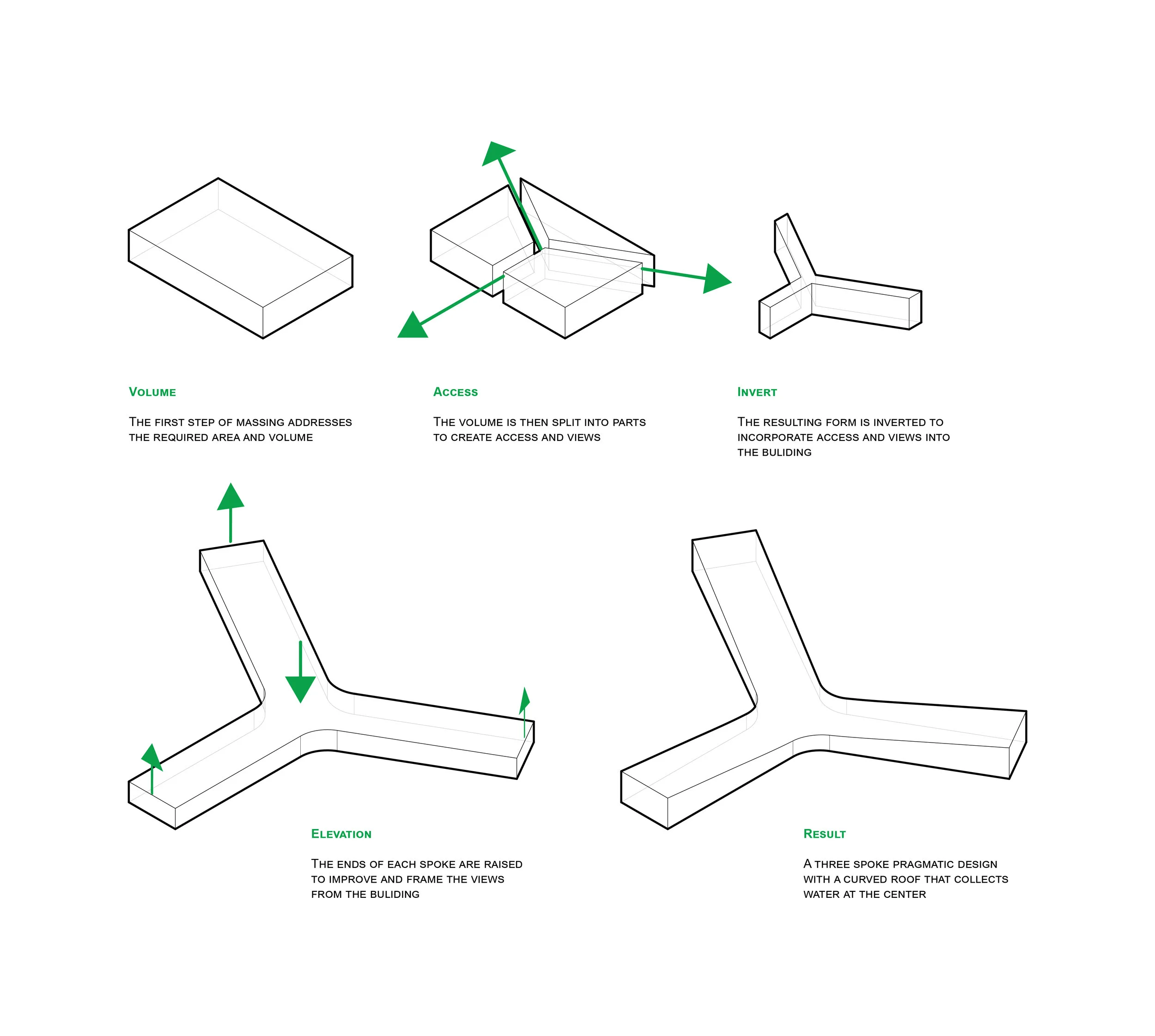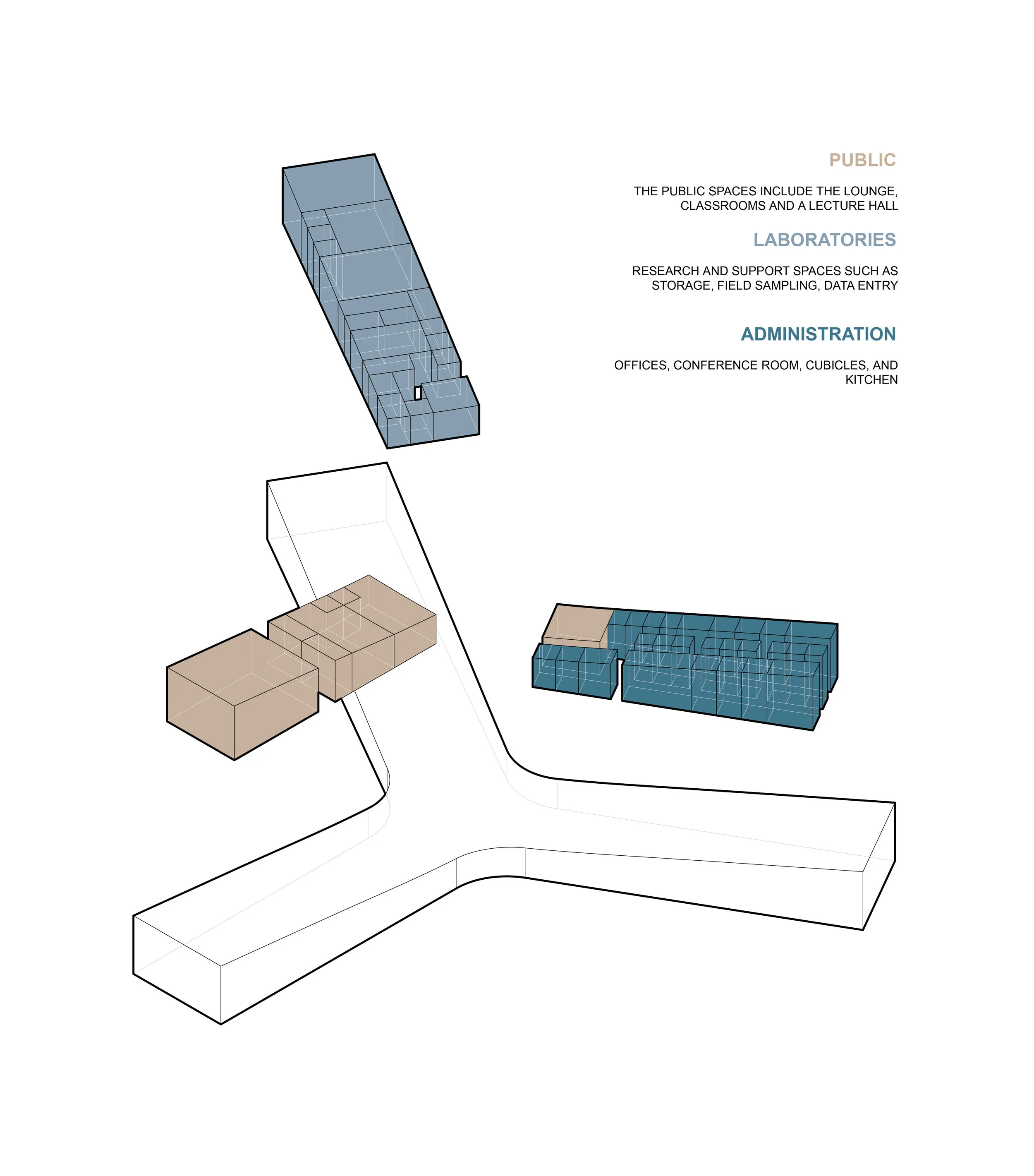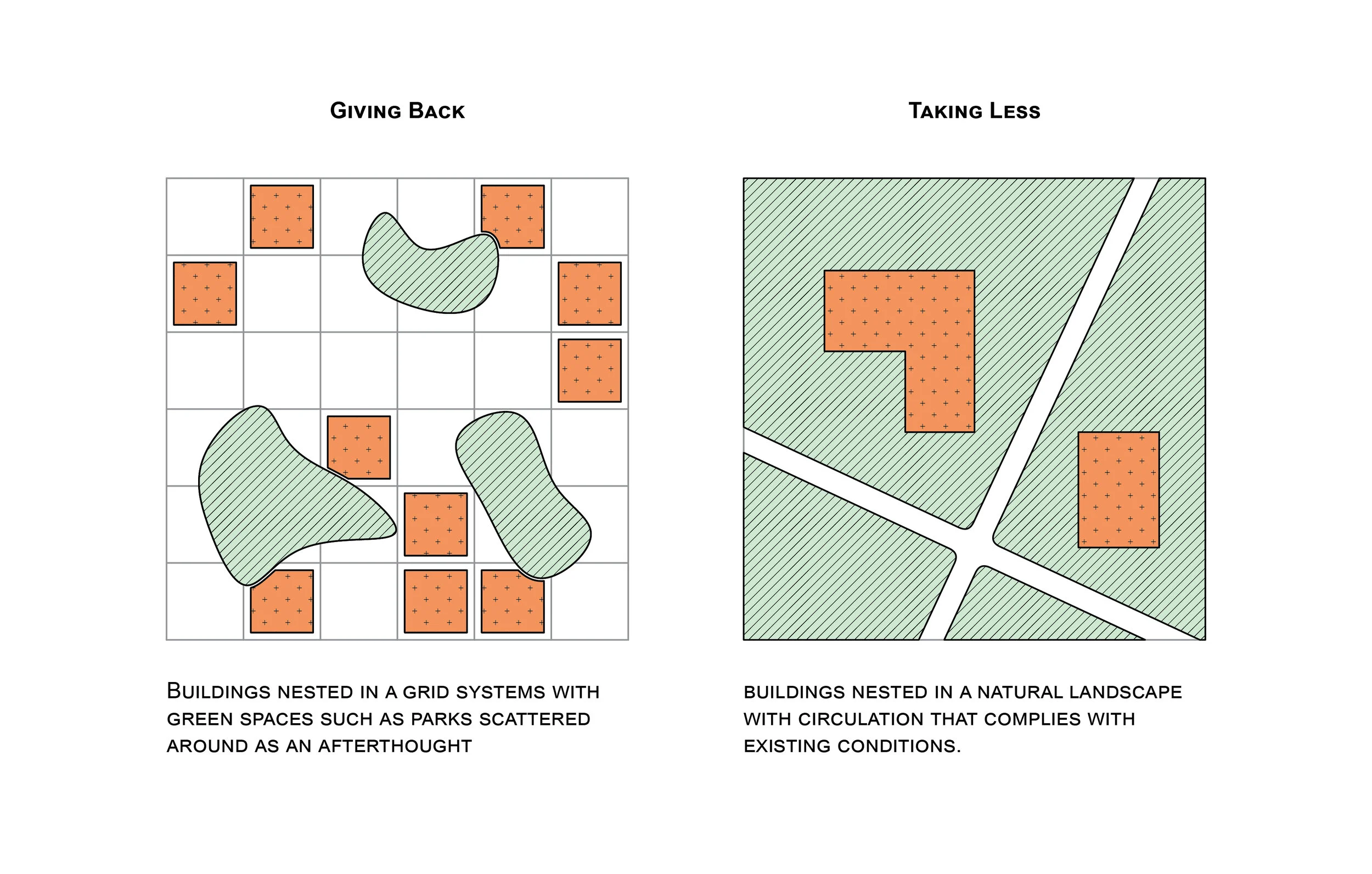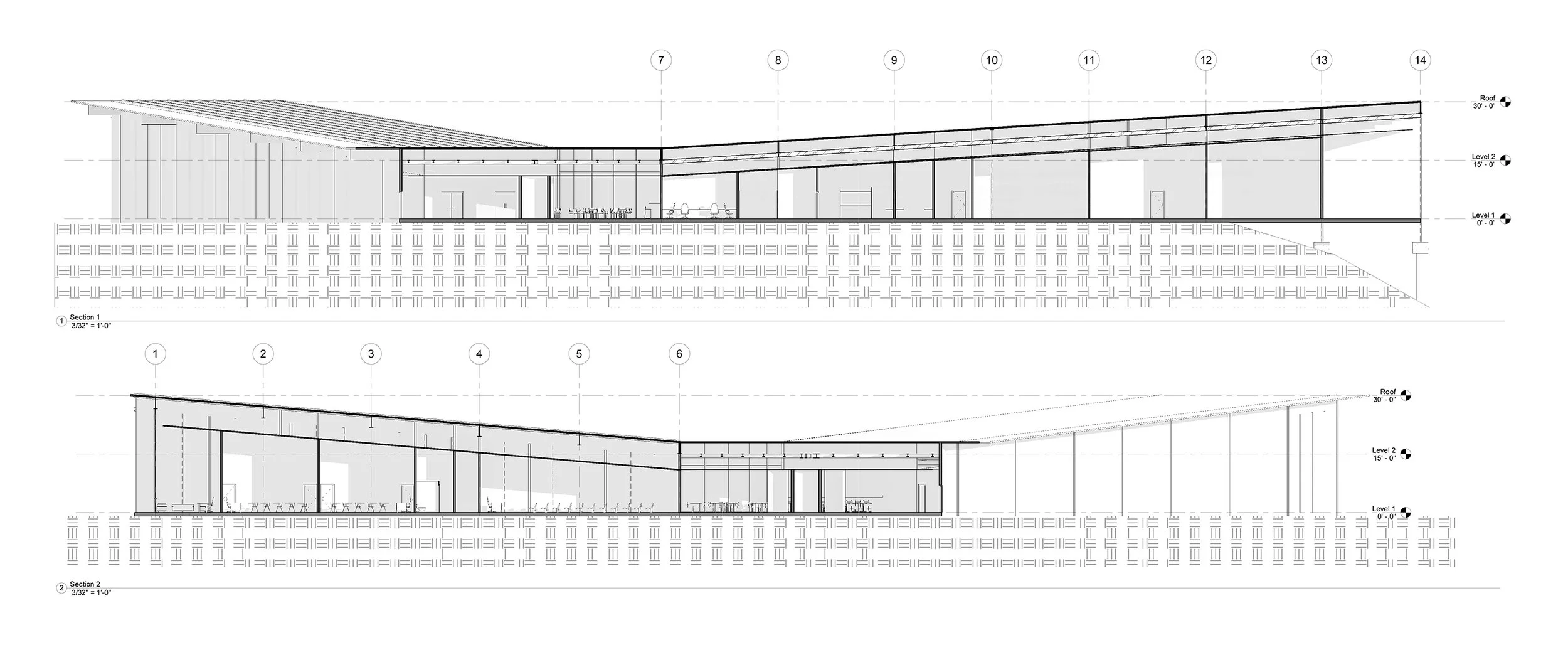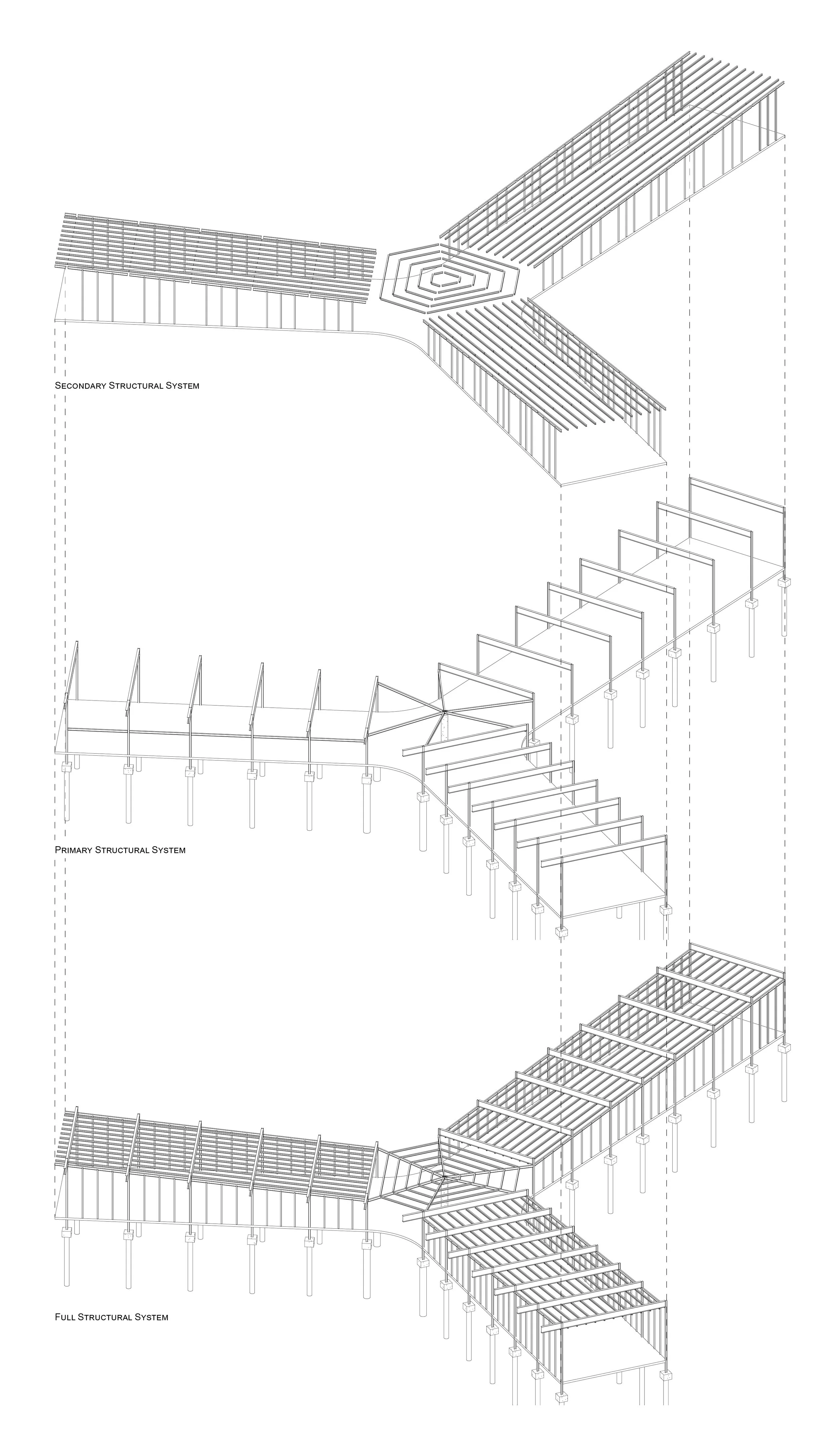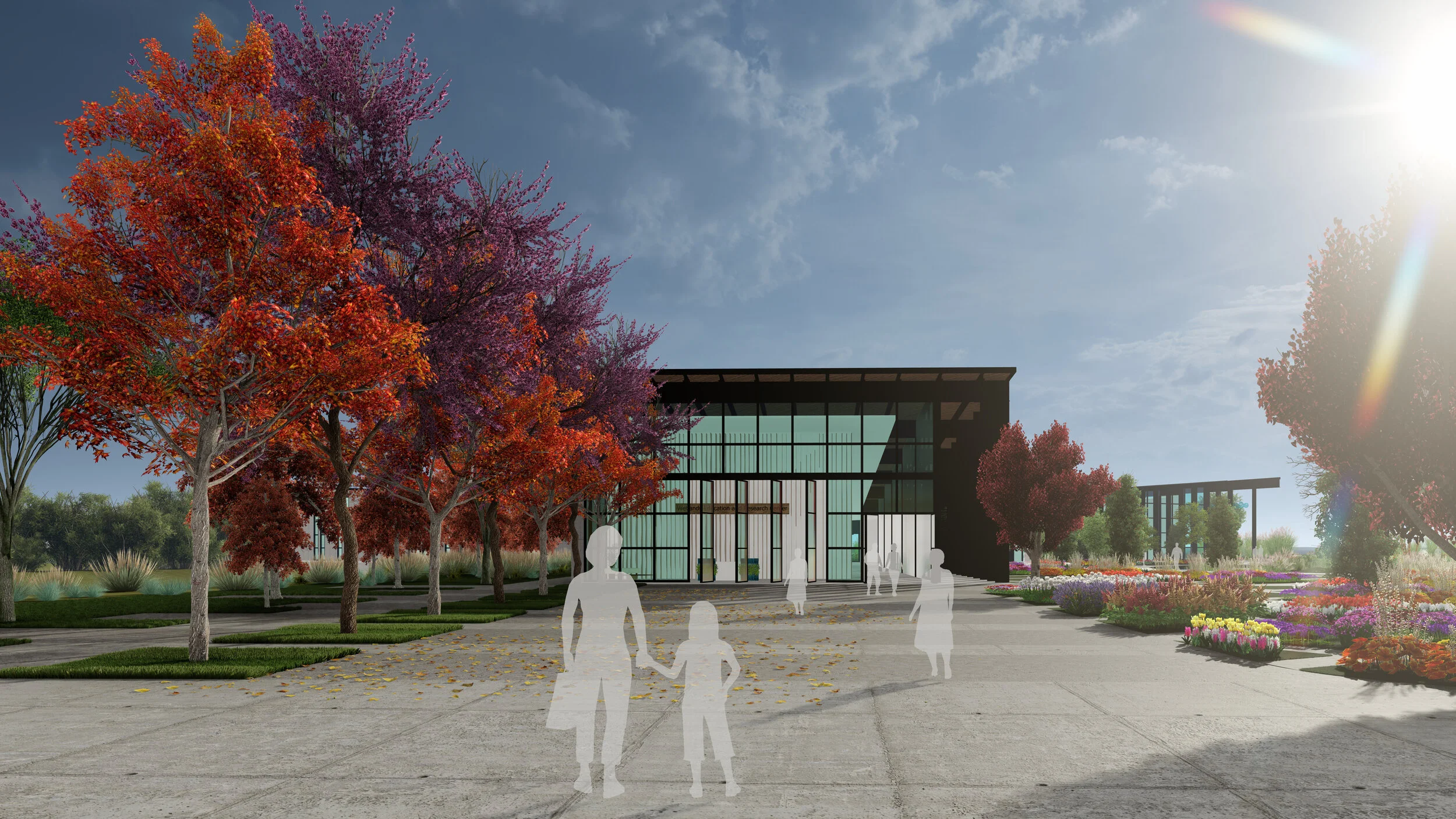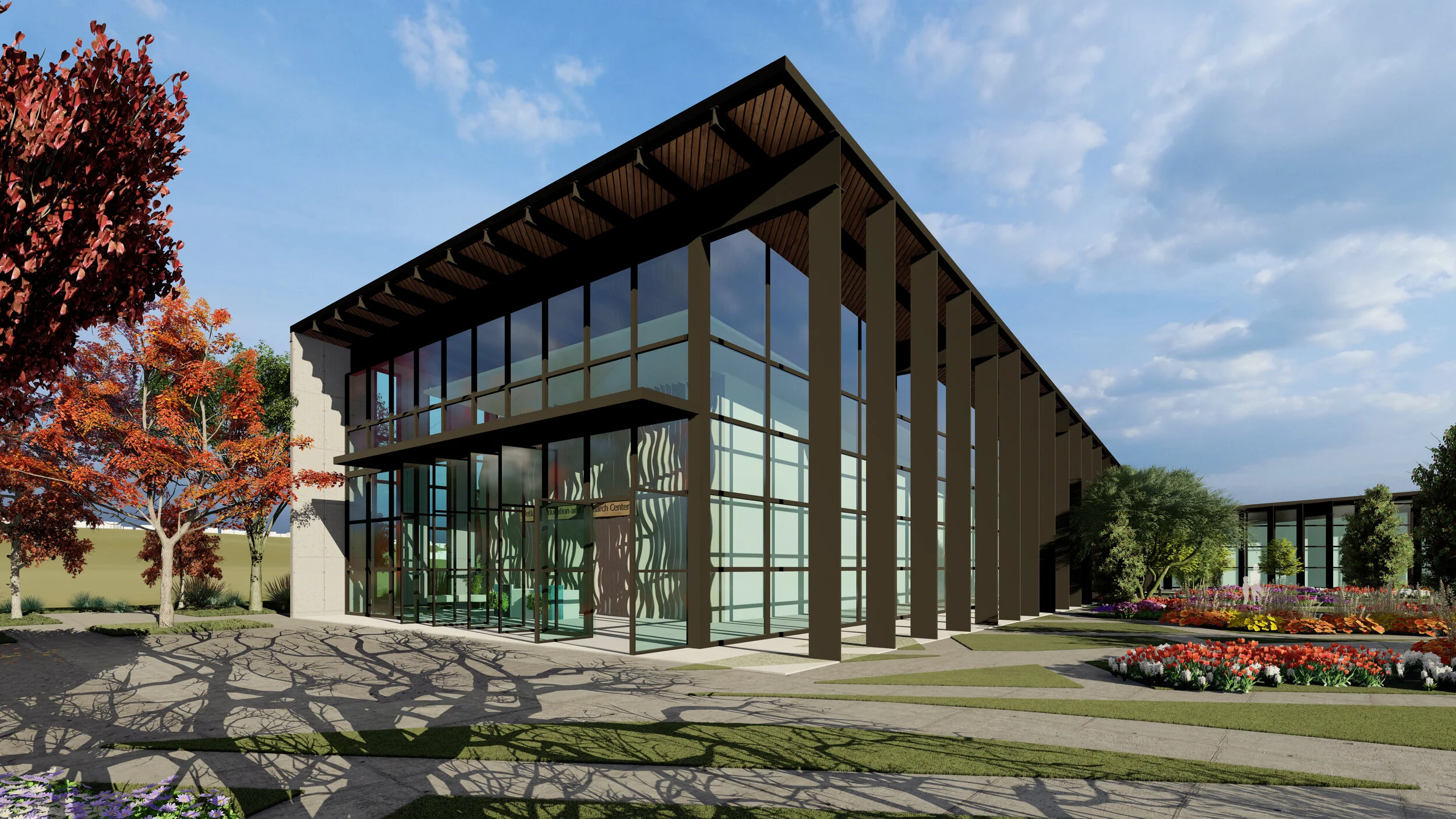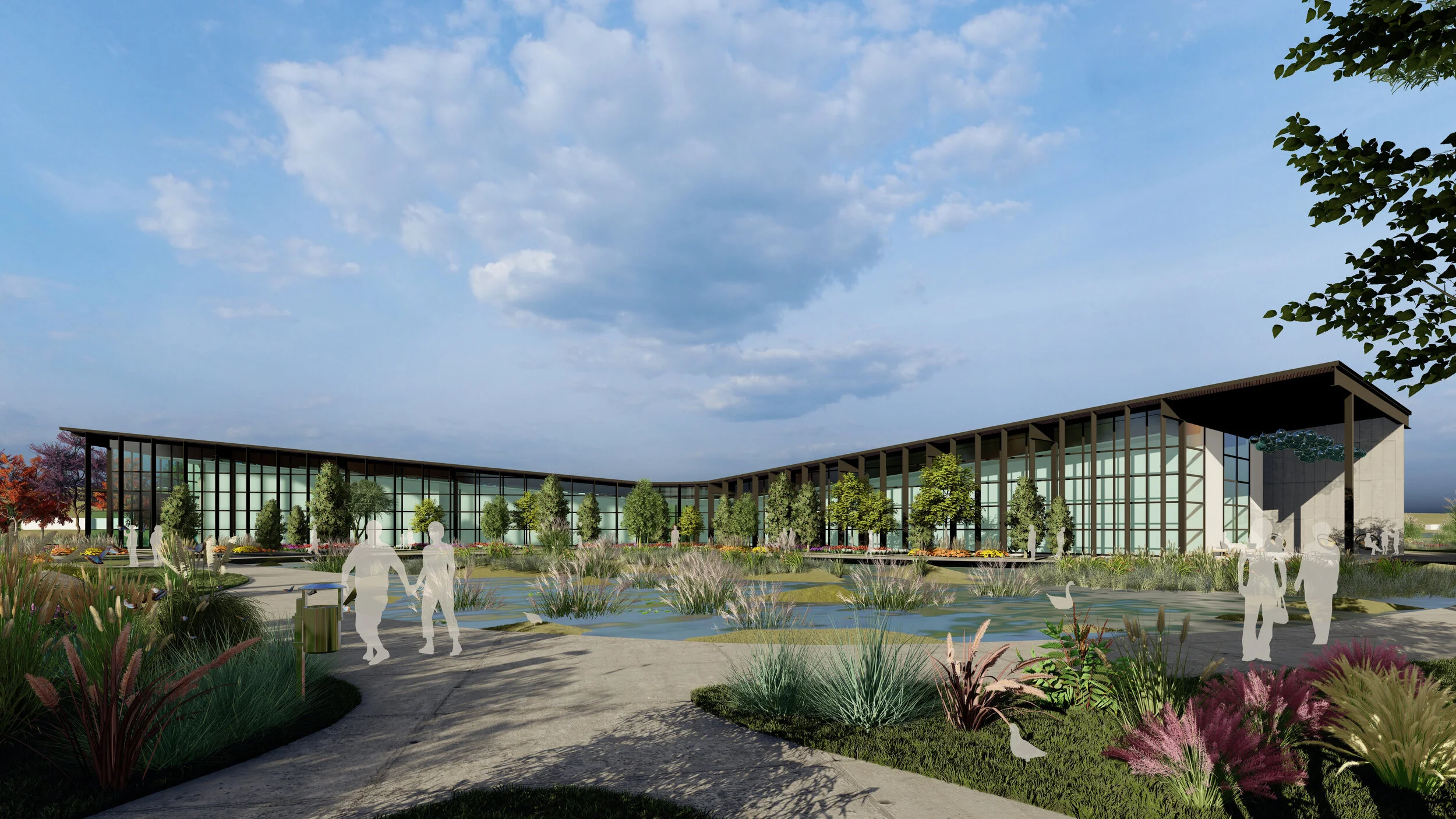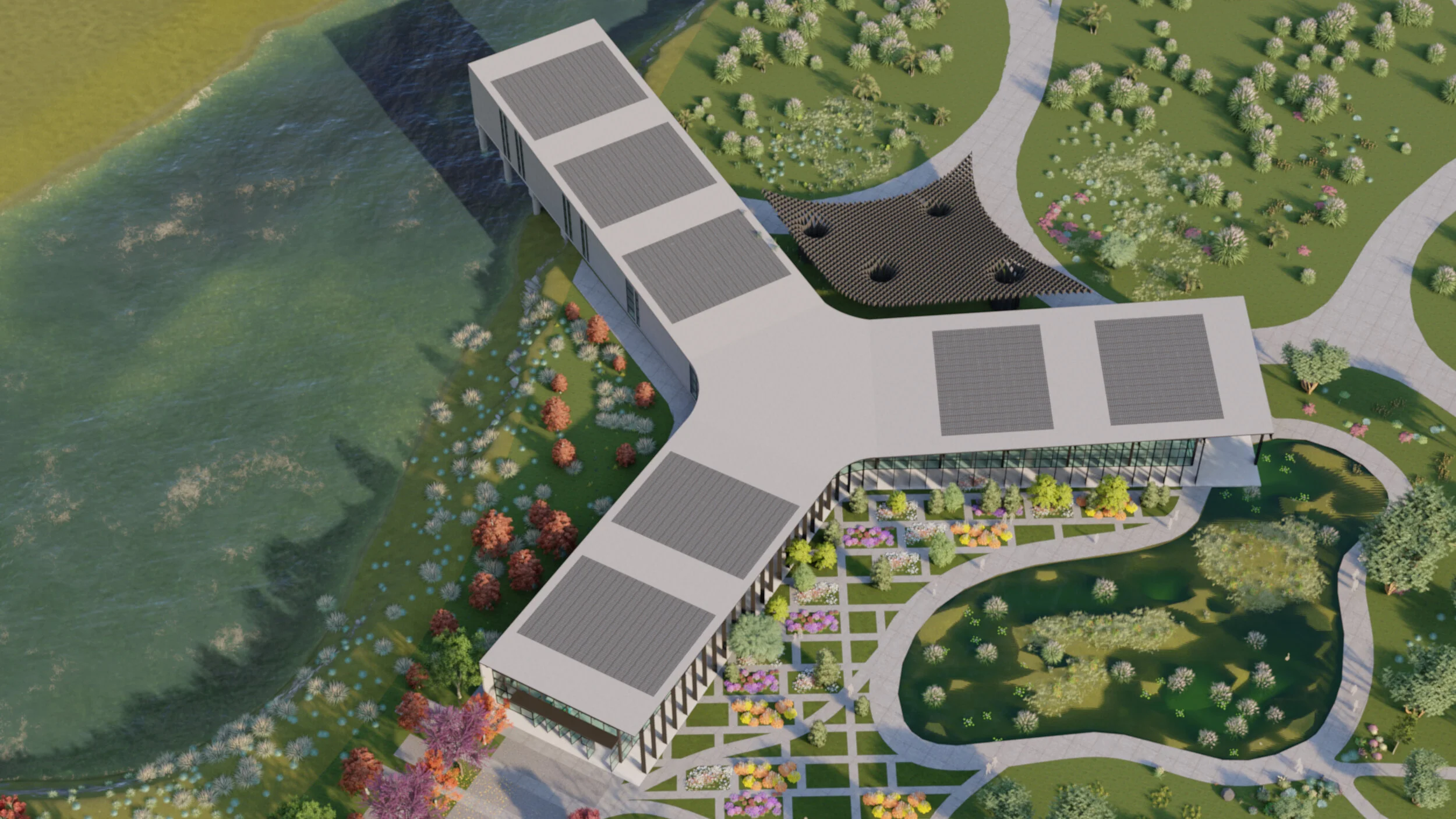
Wetlands Education and
Research Center
The Wetlands Education and Research Center (WERC) is a community-focused architectural project that aims to bring people and nature together. Through research and analysis of the Mission Bay area, it was determined that engaging the community was the best way to educate and raise awareness about the importance of preserving natural resources. The designer's role in this project was to create the concept and form for the center, as well as develop a cohesive narrative.
The WERC project was met with great enthusiasm and was unanimously selected to be presented at a local stakeholders meeting. The meeting included representatives from the San Diego Audubon Society, the San Diego American Society of Landscape Architects, the City of San Diego Planning Department, and the UC San Diego Natural Reserve System. This presentation provided an opportunity for the project team to showcase their work and gather valuable feedback from a diverse group of professionals.
The WERC project is a testament to the importance of community engagement and the value of education and research in the field of architecture and design. It is a unique and innovative way to bring people and nature together and promote a deeper understanding and appreciation of the environment.
Daniel Merupu - Architecture
Daylen Brown - Interior Design
Jonathan Pasarin - Architecture
Master Plan
The Northeast corner of Mission Bay, known as Kendall Frost, is home to multiple plant and animal species. Likewise, it also serves as a weekend destination for waterfront camping. This unique combination sets forth a challenge for Mission Bay and its future development. The wetlands have reduced in size over the last few decades from 4,000 acres to 40 acres and designing a recreational area next to the wetlands is a task that requires a deal of responsibility.
Separating environmentally sensitive areas from the public may be an easy way to address ecological problems, but in the bigger picture, it sends a wrong message – that society and nature are mutually exclusive. The ideal master plan should not fragment the space for different functions but rather incorporate them into the natural landscape.


